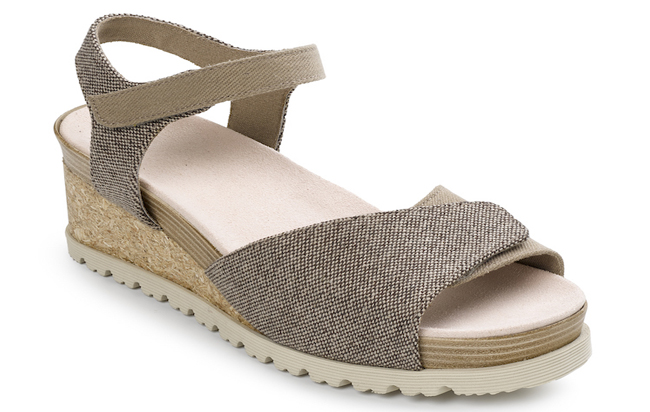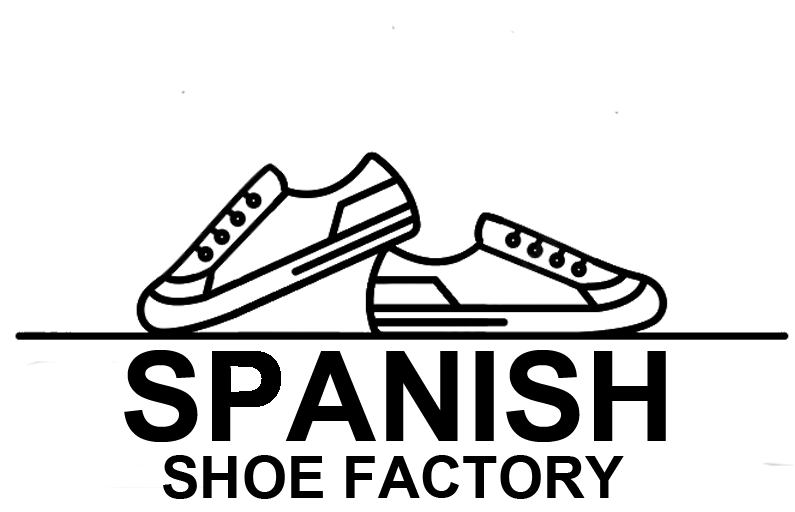
In our factory of Private label shoe Factory have gained significant traction in the footwear industry, offering consumers a blend of quality, affordability, and customization. But have you ever wondered about the intricate process behind the scenes? Join us as we delve into the fascinating journey through the production chain of a private label shoe factory, exploring each step from inception to the final product hitting the shelves.
In the captivating world of private label shoe manufacturing, every pair of shoes has its origin in a realm where creativity meets strategy: the conceptualization and design phase. This pivotal stage lays the groundwork for the entire manufacturing process, shaping the identity and appeal of each shoe. Let’s embark on a journey through the intricacies of this fascinating phase.
1. Understanding Market Dynamics: At the heart of every successful design lies a deep understanding of market trends and consumer preferences. Market research serves as the compass, guiding designers through the ever-evolving landscape of fashion. By analyzing trends, demographics, and competitive offerings, design teams gain invaluable insights into the pulse of the market.
2. The Art of Creative Inspiration: Inspiration can strike from myriad sources – from haute couture runways to the vibrant streets of bustling cities. Creative teams immerse themselves in a tapestry of influences, drawing inspiration from art, culture, and societal shifts. Ideation sessions become crucibles of creativity, where concepts are born and nurtured.
3. From Vision to Sketch: Translating abstract concepts into tangible designs is where the magic truly happens. Sketches and digital renderings breathe life into ideas, capturing the essence of the envisioned footwear. Designers meticulously craft each line and curve, exploring color palettes, materials, and design elements with boundless imagination.
4. Precision in Technical Design: Behind the glamour of sketches lies a realm of technical intricacies. Technical designers transform artistic visions into detailed specifications and tech packs. These blueprints delineate dimensions, stitching details, and construction methods essential for manufacturing, ensuring seamless execution of the design.
5. Bringing Ideas to Life: Prototyping Phase: Prototyping heralds the transition from concept to reality. Skilled artisans and shoemakers meticulously craft initial prototypes, breathing life into the designs. These prototypes serve as tangible manifestations for assessing fit, comfort, and aesthetic appeal, paving the way for iterative refinement.
6. The Crucible of Feedback and Refinement: Prototypes undergo rigorous evaluation, becoming conduits for invaluable feedback. Designers, product managers, and focus groups weigh in on aspects ranging from comfort to market appeal. Iterative refinement ensures that each design iteration inches closer to perfection.
7. Finalization and Protection of Creative Assets: With approval secured, designs are ready for the limelight. Legal experts may engage in safeguarding intellectual property, ensuring that unique designs remain protected under patent or trademark laws. This step fortifies the brand’s creative legacy and guards against imitation.
The conceptualization and design phase of a private label shoe factory epitomize the fusion of artistry and precision. It is here that ideas take flight, evolving into tangible expressions of style and craftsmanship. As we traverse this creative genesis, we gain a newfound appreciation for the meticulous craftsmanship and visionary flair that define the world of private label shoe manufacturing.
Navigating the Material Maze: Material Sourcing and Procurement in Private Label Shoe Manufacturing
Behind every impeccably crafted shoe lies a labyrinth of materials sourced from around the globe. Material sourcing and procurement play a pivotal role in shaping the quality, aesthetics, and sustainability of footwear. Join us as we unravel the intricate journey of materials from their origins to the production floors of private label shoe factories.
1. Quest for Quality: Material sourcing commences with a relentless pursuit of quality. Manufacturers scour the global market for premium materials that meet stringent standards for durability, comfort, and aesthetics. From supple leathers to high-performance synthetics, every material is meticulously evaluated to ensure it aligns with the brand’s ethos.
2. Global Exploration: The search for the perfect materials knows no bounds. Suppliers hailing from diverse corners of the world offer a treasure trove of options, each imbued with unique characteristics. Italian tanneries boast centuries of craftsmanship, while Asian markets excel in innovative textiles and sustainable alternatives.
3. Sustainable Solutions: Sustainability takes center stage in modern material sourcing practices. Manufacturers prioritize eco-friendly alternatives, opting for recycled, organic, or cruelty-free materials wherever possible. From recycled rubber outsoles to water-based adhesives, sustainable choices resonate with environmentally conscious consumers.
4. Collaborative Partnerships: Building lasting partnerships with suppliers is key to securing a steady supply of quality materials. Transparent communication and mutual trust form the foundation of these collaborations, fostering a symbiotic relationship that benefits both parties. Suppliers become valued allies in the quest for excellence.
5. Rigorous Quality Assurance: Quality is non-negotiable in the realm of material procurement. Suppliers undergo rigorous vetting processes to ensure compliance with industry standards and ethical practices. Samples are subjected to meticulous testing, from abrasion resistance to colorfastness, to guarantee performance and longevity.
6. Just-in-Time Procurement: Efficiency reigns supreme in the world of just-in-time procurement. Manufacturers adopt lean practices to minimize inventory costs and streamline operations. By synchronizing material orders with production schedules, they optimize resource utilization and minimize wastage, enhancing overall efficiency.
7. Continuous Innovation: Innovation drives progress in material sourcing and procurement. Manufacturers embrace cutting-edge technologies and materials, from 3D-printed components to advanced foams and textiles. By staying at the forefront of innovation, they push the boundaries of design and performance, captivating consumers with novel offerings.
8. Ethical Considerations: Ethical sourcing practices are paramount in ensuring social responsibility throughout the supply chain. Manufacturers prioritize suppliers that adhere to fair labor practices, uphold worker safety standards, and combat issues like child labor and exploitation. Ethical considerations underscore the commitment to integrity and human rights.
In essence, material sourcing and procurement serve as the bedrock of private label shoe manufacturing, shaping the very essence of the final product. From the lush pastures of Europe to the bustling markets of Asia, each material embarks on a transformative journey, culminating in the creation of footwear that captivates hearts and strides into the future.
Unveiling the Creative Canvas: Sketching and Concept Development in Private Label Shoe Manufacturing
In the dynamic world of private label shoe manufacturing, creativity serves as the cornerstone of innovation. Sketching and concept development lay the groundwork for each shoe’s journey from imagination to reality. Join us as we delve into the captivating realm where ideas take shape, exploring the intricacies of sketching and concept development in the private label shoe factory.
Every design journey begins with a spark of inspiration. From runway trends to cultural influences, the sources of inspiration are as diverse as the designs themselves. Design teams immerse themselves in a world of creativity, drawing inspiration from art, nature, architecture, and beyond. The goal is to capture the essence of the brand’s identity while infusing fresh perspectives and innovative concepts.
Sketching serves as the primary means of translating abstract ideas into tangible form. Designers wield pencils and digital tools to breathe life into their visions, sketching out rough outlines, silhouettes, and design details. Initial sketches capture the essence of the concept, allowing designers to explore different iterations and refine their ideas.
Iteration is the name of the game in the world of design. Designers continuously refine their sketches, tweaking proportions, experimenting with details, and exploring alternative concepts. Feedback loops involving cross-functional teams and stakeholders play a crucial role in guiding the design process. Constructive criticism and fresh perspectives drive continuous improvement.
As concepts evolve, they undergo a transformation from artistic expressions to technical specifications. Technical designers meticulously detail dimensions, materials, construction methods, and stitching patterns, ensuring feasibility for production. Technical drawings serve as blueprints for the manufacturing process, guiding shoemakers through the intricate steps of bringing the design to life.
In an increasingly digital landscape, technology plays an integral role in the design process. CAD (Computer-Aided Design) software empowers designers to create precise and detailed renderings, facilitating collaboration and iteration. 3D modeling allows designers to visualize designs from every angle, enhancing accuracy and efficiency in the design process.
Collaboration is the cornerstone of successful design development. Design teams collaborate closely with product managers, merchandisers, and suppliers to ensure alignment with brand vision and market demands. Open communication channels foster a culture of creativity, innovation, and shared ownership of the design process.
The culmination of sketching and concept development is the creation of prototypes. Skilled craftsmen and technicians bring the designs to life, translating sketches into tangible prototypes using sample materials and components. Prototypes undergo rigorous testing and evaluation, providing valuable insights for further refinement before proceeding to production.
Sketching and concept development serve as the creative nucleus of private label shoe manufacturing, where ideas are nurtured, refined, and transformed into tangible expressions of style and craftsmanship. In this realm of boundless creativity, designers wield pencils and digital tools to sketch the blueprint for footwear that captivates hearts and strides into the future.
Mastering Precision: The Role of Technical Design in Private Label Shoe Manufacturing
In the intricate world of private label shoe manufacturing, precision is paramount at every stage of the process. Technical design stands as the backbone, ensuring that every stitch, every seam, and every detail aligns seamlessly with the vision of the brand. Let’s delve into the pivotal role of precision in technical design within the private label shoe factory.
Technical design serves as the blueprint for bringing creative concepts to life. It’s the bridge between artistic vision and practical execution, translating abstract ideas into tangible specifications. Every aspect of the shoe, from dimensions to materials to construction methods, is meticulously detailed in technical designs. Each stitch, seam, and component is specified with precision, leaving no room for ambiguity or error.
Technical designers are tasked with ensuring that designs are not just visually appealing but also feasible for production. They consider factors such as manufacturing capabilities, material availability, and cost-effectiveness to optimize the design process. Technical design strikes a delicate balance between aesthetics and functionality. While aesthetics drive consumer appeal, functionality determines the shoe’s performance and comfort. Technical designers navigate this balance skillfully, integrating design elements that enhance both form and function.
In the digital age, technical design leverages advanced technologies to enhance precision and efficiency. Computer-Aided Design (CAD) software enables designers to create detailed 2D and 3D models, allowing for accurate visualization and simulation of designs before production. Technical design is an iterative process, with designs undergoing multiple rounds of refinement based on feedback and testing. Continuous iteration allows for fine-tuning of details, ensuring that the final product meets the highest standards of quality and craftsmanship.
Collaboration is essential in technical design, with designers working closely with cross-functional teams, including product managers, engineers, and manufacturers. Open communication channels facilitate alignment of design objectives with production capabilities, driving efficiency and excellence. Technical designers are responsible for ensuring that designs comply with industry standards and regulations. They stay abreast of regulatory requirements related to materials, safety, and environmental sustainability, ensuring that the final product meets all necessary standards.
Technical design also plays a role in protecting intellectual property. Design specifications and blueprints are treated as valuable assets, safeguarding the brand’s creative innovations from unauthorized use or infringement. Finally, technical design is a catalyst for continuous improvement and innovation. Designers embrace new technologies, materials, and techniques to push the boundaries of creativity and craftsmanship, driving the evolution of private label shoe manufacturing.
In conclusion, precision in technical design is the cornerstone of excellence in private label shoe manufacturing. From translating creative concepts into detailed specifications to ensuring compliance with standards and driving innovation, technical design shapes the very essence of the final product. It’s a testament to the meticulous craftsmanship and unwavering dedication to quality that define the private label shoe industry.

